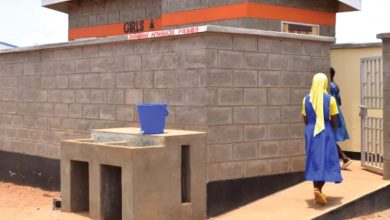Question of male circumcision
 Costa Selemani pronounces his first name as ‘Josa’. To a Malawian, his accent is hard to decipher. But he boasts to his friends that his masterly of the Chichewa language is superb. He is from Milange-Sede in Mozambique.
Costa Selemani pronounces his first name as ‘Josa’. To a Malawian, his accent is hard to decipher. But he boasts to his friends that his masterly of the Chichewa language is superb. He is from Milange-Sede in Mozambique.
Wearing a red T-shirt and black pair of trousers, Selemani broke the rules of illegal trespassing and went to Muloza Health Centre in Mulanje for something that many Malawian men are unwilling to undergo—circumcision.
He is 15 and a Standard Six pupil at Eduardo Mondlane Primary School in his home country. Being the first born in the family of five, he decided to lead by example and encouraged his 12-year-old brother, Zeque, to go with him to the health centre in search of the voluntary male medical circumcision (VMMC) which is being provided by Banja la Mtsogolo (BLM) under Ministry of Health.
He was told of the VMMC by his peers who had done it before and his grandmother encouraged him to get circumcised.
According to the VMMC team leader at the health centre, Chimwemwe Kapyola, many Mozambican boys are flocking to Muloza for circumcision.
“They outnumber Malawian males in seeking the services. As of November 26, only two of the 31 circumcised males were from Malawi. The trend has always been like this,” he says.
The VMMC is being overseen by the Ministry of Health, with service provision offered by BLM and demand creation under the Bridge II Project. The programme will run from 2012 to 2017, targeting to circumcise males from ages 12.
It is being conducted in Mulanje, Thyolo and Phalombe, but is yet to reach other targeted districts such as Lilongwe and Dedza. The question, however, is: Why is the demand higher among Mozambicans than Malawians?
In Milange-Sede, it is fashionable to be circumcised, says Selemani. He says he was one of the pressured males who decided to get ‘the cut’ in search of popularity and respect from peers. And for this reason, he explains, circumcision helps men find wives easily in the Mozambican community.
“Most women shun uncircumcised men, so chances of finding a marriage partner once circumcised are high. And who wants to stay unmarried?” Selemani asks rhetorically.
He also says his circumcised peers told him that it helps reduce the risk of contracting HIV and Aids. Thus, it further motivates boys and men to get circumcised.
The three districts where VMMC is providing services are dominantly Lhomwe who culturally undergo partial circumcision while young, whereas the VMMC requires removal of the entire foreskin.
Kapyola says generally, Malawian men are shy to go for circumcision because they think it will be a source of ridicule.
“If other men know that one of their peers has undergone circumcision, they become a laughing stock,” he says.
According to him, there are many misconceptions that men have attached to VMMC.
“Some believe VMMC is a way for collecting foreskins to be sold for huge amounts of money. Others believe the nurses take foreskins to use for superstitious reasons.
“A boy once insisted to take his foreskin home and I asked him: ‘Do you want to insult the male community out there? I took him to a pit latrine where he disposed of it. More awareness is needed to enlighten men and boys on what happens during and after circumcision,” Kapyola says.
He adds that VMMC is also facing the challenge of age, with most married or aged men not wanting to be seen to be waiting for the service together with 12-year-olds.
“As such, it is only young boys, if any, who so far have come for VMMC,” he says.
During a similar tour in Thyolo, the VMMC team had little good to say of the awareness campaigns.
Thyolo health education officer Fanuel Makina says the demand creation has been bad; no wonder most men want little to do with circumcision.
“The demand creators [Bridge II Project] usually sensitise people using megaphones. If it is windy, not many will understand what has been said. Maybe they could try using traditional, political and religious leaders since they are the ones who shape people’s perception,” he suggests.
Makina adds that people need to know that circumcision supplements HIV and Aids prevention and is not the cure.
“A lot of men get disappointed when they later learn that circumcision is not an answer to sleeping around unprotected. Men also have to be told that circumcision reduces cervical and penile cancer. This can also encourage more men to get circumcised,” says Makina.
From the studies conducted since August by Ministry of Health, 98 percent of men that go for circumcision have an HIV and Aids testing and counselling (HTC).
Ministry of Health spokesperson Henry Chimbali says this is a good development, considering that most men shun HTC while women are likely to get tested when pregnant.
MoH health education unit deputy director Chimwemwe Banda says there should be special and deliberate strategies to accommodate older men in VMMC.
She suggests having two circumcision sessions—one in the morning for the young men and another in the evening for the adults.




